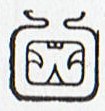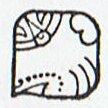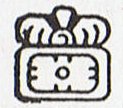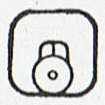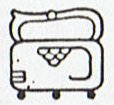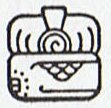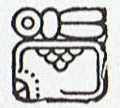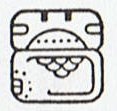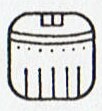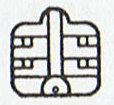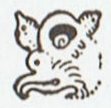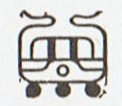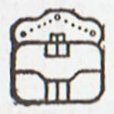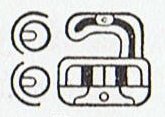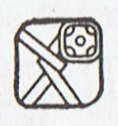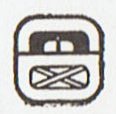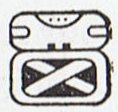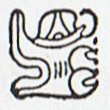|
TRANSLATIONS
I find it difficult to write the summary page for rima aueue. It cannot be short and distinct:
When we move into the latter part of the glyph dictionary this will become a general problem, I think. Glyph types with many glyphs are accumulated in the early part of the dictionary in spite of a conscious effort to spread them out. Difficult to define glyph types with few examples will anyhow accumulate late in the dictionary. The Kukulkan phenomenon occurs at both equinoxes, but from rima aueue (and hipu etc) it is rather evident that the spectacle is designed for autumn equinox. The snake head is at ground level, cfr bottom left: 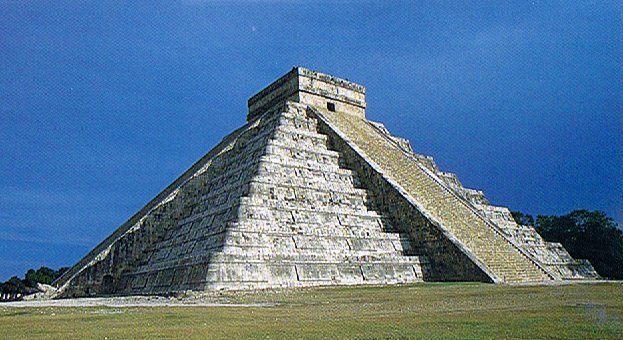 Time runs out for the 'feathered serpent'. In Maya-land we should read left as right and the reverse. Then we can see the similarity with the 'arm' in Gb5-5. Once upon a time, when the year had a summer half ('year') and a winter half ('year') it should have been natural to associate autumn equinox with the time when summer time ended. A wish to prolong summer certainly would tend to change the perceived picture, to distort it. By using powerful inputs like the 10 fingers (becoming 'fiery' at the same time) and by other means the earthly rulers could manipulate reality. Both the Maya and the rongorongo writers had 10 months, it seems, as a basic concept. Awareness of the true length of a year was also present. And in both cases two ends of the year were envisioned, one after 10 and one after 12 solar months. Of the two 'drum' months, Pax and Vayeb, one - Pax - is located 60 days before the end of the year, and the other - Vayeb - as an extra 5-day month beyond the 360-day solar year:
Hua Reva (without initial Te) similarly indicates the 10th month and Hatinga Te Kohe (with Te in the middle, where the 'breaking' occurs) the 12th month. Gb5-5 is the 359th glyph (counted from Gb8-30), and it is connected rather with Hatinga Te Kohe than with Hua Reva. Yet the little hipu sign (which refers to Hua Reva) is present. Solar time runs out in two stages, like two waves. The reappearance of the sun also comes in two stages, first at the solstice turnaround, when sun once again begins to move, when there is a new baby. Then when he arrives from abroad after a few months. The Maya had it as after 80 days (5 Tzek) and from the south. The rongorongo men may have reckoned with a shorter duration before sun returned from his winter maid in the north. According to G we can see the transformation time to be 29-30 days long, which leads to the at first rather peculiar picture of a 0 + 10 + 1 = 11 month long solar year. Not until Ga1-30 comes the first Rei:
Given the two-stage sun leaving process, he must then be present at least partially up to Gb5-6:
Counting from Ga1-30 up to and including Gb5-5 we have 330 days. If we say broadly that the sun year is 11 * 30 = 330 days long, we should - reasonably - think that he is abroad far in the north equally long, i.e. his cycle should be 2 * 330 = 660 days. 660 is shaped like 66, and also resounds in 366. 6 + 6 = 12, a cosmic thought. So far it is possible to do a make-up. But I must also explain the curious appearance at sommer solstice of a pair of rima aueue signs:
My first argument is that there are two kinds of 'year' in a year. One year is dictated by the presence (or non-presence) of the sun, the other shaped from the dictates of the moon. Here it cannot be the sun who is 'running out'. Possibly he is changing into his 'rain coat', though. The flow-like attribute of rima aueue could jokingly have been used for that purpouse in Aa4-36--37. But there are 2 rima aueue signs, each connected to henua. Sun is up in the sky, not down on earth. Henua indicates it must be the moon rather than the sun who is 'running out'. Also, moon is two (waxing and waning), while sun is single (only present and non-present). Anciently the presence and non-presence of sun was connected to the equinoxes. Therefore a moon 'cycle' for the year could not be determined by the equinoxes. Moon is the opposite of sun in every respect, and logically it must be the solstices which divide her year cycle into two halves. The suggested connection between henua and moon (in contrast to the sun) throws a certain light on the double henua ora where Metoro changed his reading order from normal to reversed:
We will have reason to return here when we come to moko in the glyph dictionary. |
|||||||||||||||||||||||||||||||||||||||||||||||||||||||||||||||||||||||||||||||||||||||||||||||||||||||||||||||||||||||||||||||||||||||||||||||||||






